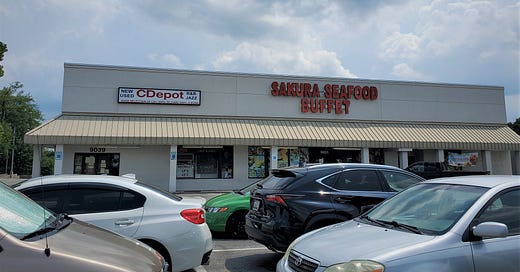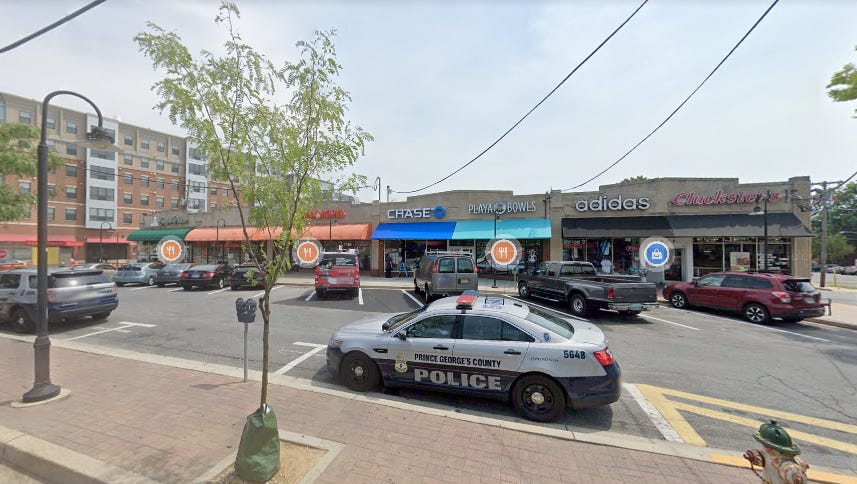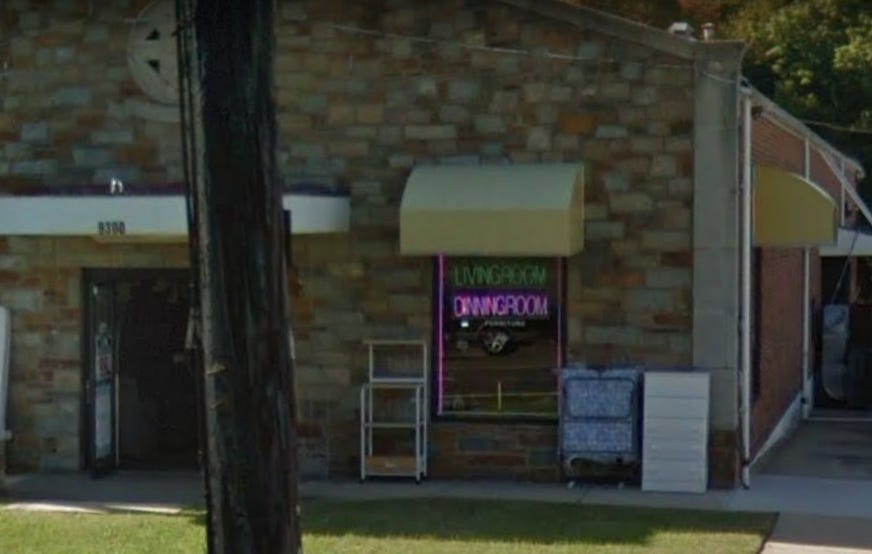I was in the Maryland suburbs of Washington, D.C. last week: as it happens, meeting someone who subscribes to this newsletter. We met up in a neighborhood in the eastern half of Montgomery County, and then I did some leisurely driving—as I often do despite my opinions on car dependence and auto-oriented development—visiting a few thrift stores and reminiscing about my two grad school years in this area. (The trip also inspired a forthcoming piece at Strong Towns!)
I studied public policy at University of Maryland, College Park, only a few miles from the D.C. line. I had gotten my first car, which I still drive, a week before I moved in. My first week here was the first time I went to church alone, or had a Sunday lunch at a Chinese buffet alone. I enjoyed these little freedoms a lot. I met my wife here. My then-vague idea of writing professionally unfolded more neatly than I ever would have hoped. (Say, your subscription really helps!) I was homeschooled all the way up to college, and I went to college 40 minutes from my parents, so in some ways grad school was what I had actually imagined college would be. At a later age than a lot of young people, it was my first taste of absolute autonomy and independence.
As much as I love Northern Virginia, and our own home in Reston—50 miles of nature trails probably saved our sanity during 2020—there’s something here in Maryland that I miss, and that I would never have expected to miss back when I first moved down in 2015. At that time, I didn’t even think of College Park and the surrounding area as “the suburbs”—as far as I was concerned, it was already the city! But I got used to the crowdedness, the traffic, the generally higher level of intensity compared to my sleepy hometown and college town.
I enjoyed the company of strangers and the huge variety of stores and restaurants within just 10 or 15 minutes’ drive. I liked my cozy degree program of a couple hundred students, combined with the energy of a massive campus. I worked hard, but it’s the everyday things that left an impression on me to this day: taking a bath in my apartment’s private bathroom, without having to check the status of the dishwasher or the washing machine; running out for late-night Chinese takeout; breaking up study nights with meandering drives through the area’s vintage, occasionally still neon-lit roadside landscape. These are things you can only really do in between leaving your parents’ house and getting married.
It’s interesting to me that I gravitate back here. Despite having spent four (rather than grad school’s shorter two) years in undergrad, in a smaller and more affluent small-town environment, I don’t particularly identify with my college or my college town, back up in New Jersey. It’s this region in Maryland, my stomping grounds for two really important years, that gives me a feeling of returning somewhere.
My own childhood surroundings do too, of course. I wrote about that a little bit here, and will be coming back to it. (New Jersey is chock-full of small towns, which, as you may know, I love.) But in a lot of ways, it was in grad school, in my pillbox apartment, and in the diverse, crowded, lively old suburbia of Prince George’s County and east Montgomery County that I feel I became an adult.
After leaving my reader’s neighborhood, I drove to the old H-Mart in Wheaton I used to shop at frequently, and then to the College Park area via Silver Spring. I drove past the house where I found a working minifridge that I convinced my now-wife to let me store in her apartment until I could sell it on Craigslist. (She was very patient.) Then I got on the Beltway and ended up on Baltimore Avenue, the stretch of U.S. Route 1 that runs through College Park (it becomes a main avenue in D.C., then runs through Alexandria, Richmond, and beyond. U.S. 1 was the main north-south route for the Eastern Seaboard before I-95.)
Baltimore Avenue is still the visual mishmash it’s been for a very long time, but the area’s change, mostly for the better, is obvious. Another apartment complex is sprouting up not far from a couple of small, run-down low-rise brick structures, which will probably be redeveloped. An old “taxpayer strip” (an early street-hugging strip mall) near the UMD campus featured in Chester H. Liebs’ Main Street to Miracle Mile still stands; the one a block down doesn’t, now home to apartments as well.
A much-needed supermarket, a Lidl opened in 2019, stands on the corner where I used to turn right to attend a small church in a pleasant neighborhood aesthetically frozen in the Fifties.
The corner used to be home to my favorite Indian restaurant, nestled in the half-underground lounge of a motel. Redevelopment is underway on the site of a burned, shuttered diner and an aging Quality Inn. Some folks see too many apartments. I don’t. This is a huge college town a stone’s throw from the D.C. line. What should be here instead?
The pleasantly cluttered record shop next to a Chinese buffet, with a credit card terminal that takes about a minute to approve, is still open.
But sadly, the misspelled “dinning room” neon sign that improbably hung for years in the window of a mattress and furniture store is gone.
The new one isn’t neon, either.
I’m sketching out two broader points here. One is that a seemingly nondescript or typical landscape can be meaningful, can very much be home, a “real place” with character and culture, not only for the people who have roots but even for people like me, who, in the scheme of things, are merely stopping by. The other is that the area’s growth doesn’t detract from what it is or what it means. That’s high level, I admit, and it does gloss over some complexities on the ground.
On that note, take a look at this article by Dan Reed, a Black urbanist in Montgomery County. A few years ago, he wrote a great piece about Prince George’s County’s ambivalence to new urbanist-style development. He notes that this ambivalence arises in part out of an impression that the county’s famed Black middle class and its archetypical suburban landscape are linked. Now, however, new, trendier construction is leapfrogging Prince George’s into Montgomery or even Frederick Counties in Maryland, or jumping down to Northern Virginia. It’s worth noting that much of Prince George’s County is streetcar suburbs and areas once served by rail and trolleys; in some ways, modern urbanist developments are picking up where these places left off, before the advent of total orientation around the automobile.
From my vantage point as a two-year visitor, I can’t speak to the complexities of how people who grew up here, of any race, feel about all of this. But I see good things happening. And, remembering those two years that meant so much to me, I always enjoy coming back.
Related Reading:
Northern Virginia Is a Real Place
If you like what you’re seeing, please consider a paid subscription to help support this work. You’ll get a weekend subscribers-only post, plus full access to the archive. And you’ll help ensure more material like this!







